Have Questions or Comments? Please ask your questions in the comments section below. We attempt to respond to ALL questions or comments.
Transcript:
Geographic Farming – how to make REAL money Part 7 – The Best postcard marketing 1 – self selection
This is the Get Sellers Calling You marketing podcast for real estate agents and I’m Beatty Carmichael. For simple to do, proven marketing strategies focused exclusively on finding sellers and getting more listings, visit our website at GetSellersCallingYou.com. And now, let’s begin our next session of Get Sellers Calling You.
Caroline: Hi, this is Caroline Springer and welcome to the next session of Get Sellers Calling You with Beatty Carmichael. Beatty is the CEO of MasterGrabber, the creator of Agent Dominator and one of the top marketing experts in the real estate field. Today we are going to be continuing on in our topic of how to make money in geographic farming. This is a series of calls that we’ve had on that. This is actually going to be our last one. We are going to wrap up and talk about postcard marketing.
Beatty: We’ve covered all of the other topics. Let’s see, the topics we’ve covered, if I go from memory, we have talked about: How to select a farm and the process to make sure that your selection is dead-on accurate so you make the most money from it. We’ve talked about how to select the mailing list because there are lots of options and opportunities for the types of mailing lists you are looking for (it depends on what you are trying to do). We then talked about 10 different things you can do within a farm that are low cost but allow you to start touching it. We talked about one other thing but I forget what that was and then today we are going to talk about postcard marketing in that farm because that is generally the concept that most people think about when they think of geographic farming and it is a very effective approach to touching and persuading people to choose you.
Caroline: Thank you for that. That was a good, little refresher. Just a reminder for those of you who are on our live call, we do have the lines muted and we will open for questions and answers at the end of the call. But yes, thank you Beatty for that refresher. I think this really has been a content rich series on the best ways to make money with geographic farming and I’m excited to continue on with postcard marketing that really works and kind of get into the nitty gritty of some of the differences. I know that maybe some of our listeners have tried different ways so I’m sure they are going to be interested to hear the differences and what you have seen be successful.
Beatty: Yes, you know, it’s interesting, I remember when we first started doing geographic farming (this is going back to 2012 / early 2013) and I was inquiring to realtors who were thinking about using us and we were talking about the services we offer, I would always ask them, “Have you ever done geographic farming before?” And I would say probably half or two thirds of the people answered “Yes.” Then I would ask them, “Was it successful for you?” And how many of those people do you think answered yes?
Caroline: Oh goodness. Maybe less than half?
Beatty: Try maybe less than 10%. So your comment that maybe people have been out there and done postcard marketing before…. What we find is that most people have tried geographic farming and they failed. And they failed because geographic farming is all about process. It’s all about doing the right things, the right way consistently and most people pick a farm and mail a couple of postcards and they spend money and they don’t really have a strategy. They don’t really know what they are doing and, therefore, it fails. This is, I think, our sixth podcast call focused just on this one topic because there are so many opportunities to fail which means there are so many opportunities to succeed. And today, as we talk about the postcard, this is really where the rubber meets the road. The first thing? You’ve got to pick the right farm. Then, the second thing, you’ve got to touch it right. This call would be, I would think, number two in significance in terms of importance in making a geographic farm work. So this is going to be a fun call.
Caroline: Well good. I am excited to hear and know I’ve learned a lot and I know our listeners have too. The questions that they have at the end of the call have been really good to hear as well. So just starting off with postcard marketing that works, I think it could be even beneficial, since there are some realtors who haven’t even tried geographic farming, do you want to explain the two difference types of postcards that people typically send?
Beatty: Let me rephrase your question. It’s not two types of postcards that people typically send. Most people typically send neither of the two most important types of postcards. So we are going to talk about the two types of postcards that are the ones that you really ought to be sending and what most people have done in the past that just didn’t cut it.
I’ve got to tell you. So let me back up and let me Paul Harvey the rest of the story. So that less than 10% of the agents I’ve spoken with when I ask them, “Was geographic farming profitable for you?” and they said “yes,” I always ask them, “What type of postcard marketing did you do?” And 100% of everyone who said that it was successful for them did the same type of postcard. And that is a Just Sold postcard. So if you got nothing else out of this call, if you just wanted to hang up right now, even though we are only a few minutes in, you could say, “I can send out Just Sold postcards and I’ll at least make it profitable.”
What I’m going to talk about in these two types of postcards take the Just Sold postcard and leave it in the dust in terms of the results you can get. So you can do Just Sold postcards—most people don’t—but those who did consistently made money, but now we are going to take it leaps and bounds further down the road of how much money you can make from the same farm.
The two types of cards I want to talk about today: one is called a direct response card. Internally, we call it our self-selection card. The other is what we call an inside reality card. Basically, the self-selection card that are direct response cards are designed to identify someone who is thinking about selling. Let me ask you a quick question, Caroline. If you were a real estate agent and you could drive down the road in a neighborhood that you are wanting to farm and you would know with relative accuracy which homes were actually going to go on the market in the next six to twelve months, do you think that would give you a leg up in being successful in that farm?
Caroline: Absolutely. I think that would be every realtor’s dream.
Beatty: Okay, so if you knew who it was, what would you do differently than what you would normally do marketing to that farm?
Caroline: I would think those would be the only homes I would be sending cards to and knocking on the door and keeping my face in front of them all the time so that I could be sure that would choose me to list their home.
Beatty: Gotcha. So you would up your game in how you touch them? You would touch them more consistently and, what I would like to suggest, more expensively. Your time is worth money. You probably give them more things that cost more money because you know that that is a hot target. That’s one idea. Let me ask you another question. Let’s assume for a moment that you are a really good real estate agent because most of the folks on the call probably at least feel that they are if not in fact that they really are at the top of their game. So let’s assume that you are a top-of-your-game real estate agent. You’ve been selling real estate now for 10 or 15 years. You are in the top 5% or 10% of all agents out there. Let’s assume for a moment that you are going to sell your home. If you were that agent—take the commission money aside; don’t worry about how much money you will make or save from your own commissions—but if you were going to sell your home and you are a top-of-the-game agent, would you choose yourself personally, or do you think you would choose another agent?
Caroline: I would absolutely choose myself. Even like you said, commissions aside, I’d be confident that I could do it and that nobody could do it better than me.
Beatty: There you go. Okay, so you would be a fool to choose anyone else based on what you know about yourself. So let me ask you a question. If all of those people in the farm were as confident about you and your ability as you are about you and your ability, would they choose anyone else besides you?
Caroline: No. If everyone knew what a great agent I was and how hard I work and what a great realtor I am and my marketing and how tirelessly I would work to make sure their home was sold, if they knew that reality was the truth, they wouldn’t hire anybody but me.
Beatty: Exactly. So that is inside reality. So now we just kind of defined: What is a direct response card? It identifies those people thinking about selling. What is an inside reality card? Its purpose is to get them to believe about you as you believe about you. Because once they believe about you, they would go nowhere else. So this is why I say these are the two most important cards because they allow you to suck listings out of that farm right up front and long-term start to claim most every listing that starts to come out once we can persuade them. So that’s why these are the two most important cards. Yes, you can start with Just Sold postcards, but if you focus on direct response to identify sellers, you focus on inside reality to persuade them, then at that point you’ve got a game changer that makes your farm really, really profitable. So that’s what I kind of want to go into on this call. And hopefully, we can wrap it all up on this one call. Otherwise, we will continue this call into next week if we get going too long. From there, which card would you like to talk about first?
Caroline: Let’s talk about the direct response card.
Beatty: Let’s talk about direct response. In marketing there is a concept known as self-selection. Okay. And self-selection is where you use marketing, you send it out to a crowd and you let the people in the crowd select themselves if they are applicable to what you are offering. Does the name self-selection make sense now?
Caroline: It does. That was a clear explanation.
Beatty: Self-selection is a direct response card that is focused on getting that prospect to select themselves as someone who is thinking about selling. So the question then is, how do you do it? Here is a real basic overview about marketing. There are four steps to marketing and direct response. You have interrupt, engage, educate and offer. Interrupt is a headline. Engage is typically a subhead. Educate is you explain what you are doing. The offer is you give them a chance or opportunity to go get whatever it is that you are talking about. So the way this works in doing this within a postcard environment is there are typically three types of offers. The most important part of all of this, once you get your farm identified, is your offer.
Let me see if this makes sense. As a seller, you are thinking about selling your home. And I’m going to send you a postcard about planting beautiful flowers. Does that hold your attention as a seller? Does that cause you as a seller to respond any differently than someone who is not thinking about selling?
Caroline: No. I might be interested personally, but not as a seller.
Beatty: If I send you another postcard that is talking about how to determine what your home would actually sell for in today’s market, as a seller, does that grab more of your attention than it would if you were not thinking about selling?
Caroline: Oh, absolutely. I would very much be interested to know what the value would be.
Beatty: So now we have just established what an offer is. An offer is whatever I’m offering you to try to get you to respond. If I offer how to plant pretty flowers, it doesn’t do anything in separating you in self-selection, self-selecting you from everyone else. So what I want to do is take my offer and I want to narrow it down to something that a seller is interested in. Now what do you think a seller is most interested in? What type of offer do you think they are most interested in knowing?
Caroline: I think they would be most interested in knowing the value of their home and how much it would sell for or maybe how much the homes around them are selling for. Anything that would guarantee them more money for their home or anything along those lines. I think they would definitely be interested in that.
Beatty: Yes, so survey says, “You are pretty close.” That is not the top thing they are interested in but that is definitely on the top of the list. Now the reason I say that is because I have to put this out there. Every time I talk with agents, especially these high-producing agents who have been in the business for years and do a lot of volume. When I ask them, “What does a seller want to know” they’ll respond, “The only thing they want to know is ‘How much is my home worth and how fast can you sell it?’” And I beg to differ. This is where most agents are a little myopic. They get tunnel focused. When you start to look at this from a different perspective, you start to understand something different. Let me suggest a couple of things. Are you more interested in knowing what your home is worth or are you more interested in picking an agent who can get you the most money for your home?”
Caroline: Oh definitely in an agent who can get the most money for my home because maybe they could get even more than what the market says it is worth.
Beatty: Right. Or, just the opposite, you may pick an agent that gets you less than the market says your home is worth. This is just a simple example that things are not always what they seem to be. You’ve got dig deeper and understand what is it about that seller that really will toot their horn? Just as it relates to self-selection cards and the direct response, “How do you identify sellers,” we’ve done over 21 split A/B marketing tests trying to understand how you can improve that game. I wish we could go into it. We’ve found things that will consistently would get 4X and 5X and 8X higher response rates. Fonts, font colors, headlines, what the card looks like and all kinds of things. When you start to add it all together, then what you have is something that can produce a lot of results. Let’s then reel this back in and I want to talk in terms of three different offers that we have found to be most effective.
Let’s talk about ‘How much is your home worth?’ We’ll call it the ‘home valuation’ approach because that is typically what most agents have access to; they have home valuation websites and there are some great companies out there that will mail postcards that say, “Find out what your home is worth. Go to this website.” It’s a great way to do it. They are very effective. And I don’t want anything to come out in this dialogue to make it sounds as if I’m poo pooing that idea because it is very effective. But here is the challenge that we have found. In certain areas, based on the culture of the community you are targeting, we have found where that home valuation approach, “Hey find out what your home is worth, go to this website or call this number” doesn’t generate quality leads. Let me ask you. Are you and your husband thinking about selling your home in the next year?
Caroline: No, we are not. We love our house and are planning on staying for a while.
Beatty: Okay, great. Would you like to know what your house is worth right now as your most valuable investment that the two of you own?
Caroline: Yes, I would like to know. We’ve done some additions and some renovations and I would be interested to know that. You are right, I’m not interested in selling, so I would be a waste for a realtor.
Beatty: So you would respond to finding out what your home is worth because you have interest, but you would be a false lead. So this offer, the home valuation, gives what is called a false positive lead. Some are false and some are positive. You have start to filter through them a little bit more. That doesn’t mean it’s bad. It just means you have to be aware.
Real quickly. You’ve got to track your responses. If you are doing direct response to apply the self-selection approach, you’ve got to be able to track who is responding. The great thing that the home valuation websites do is that they make it really easy. You don’t have to have any special technology. You just buy your home valuation website service and put your own domain on it. Mine might be YourHomeValuesWithBeattyCarmichael.com. Whatever yours is: vestaviahomevalues.com. Anything like that. It’s just a simple domain. Then people go there and they enter their address. So if I mailed you a postcard, you would enter your address and it would give you generally what your home might be worth. When you enter your address now I know which address was entered. So that tells me that you might have interest in selling, but it’s still a false positive lead. Then as I go deeper into that home valuation website, I can make adjustments. I can say, no I have four bedrooms instead of three. We have three bathrooms instead of one. So you start to make adjustments on improvements you have done and then it starts to update your valuation. Then there is finally a place where you can request a professional competitive market analysis. What is happening in this home valuation website is that it’s taking you into a funnel. The further you go into it, the more likely you are to be thinking about selling. Are you following the logic process on that?
Caroline: Yes, I am with you.
Beatty: Okay, so that is why the home valuation website can really be a great, simple approach because it brings people into it and it can be real effective. But it’s not the only approach. In our testing, we have found one approach that actually beats everything else hands down. Would you like to guess what that offer is that wins far greater than the home valuation website?
Caroline: Can I guess since I know?
Beatty: Well, let’s see, do you know? You can guess and if you know, let’s test your internal knowledge of our products. Go ahead.
Caroline: I know that with our customers that our most popular and most successful card is a card sending out to potential sellers that you have clients who are ready to purchase a home in a certain amount of time. We call it the ‘I have a client’ card. That would appeal to someone who is actually looking versus me who is interested in the valuation of my home but not interested in having a buyer come knock on my door.
Beatty: That’s right. It’s what we call the ‘I have a client’ approach. As we talked on some of the previous podcasts, the whole idea came from a friend of mine. He was telling me that he had a client who wanted to buy on this one street, but he couldn’t find a house that he liked. When you are looking at just one street, you don’t have high turnover rate either because there aren’t that many homes there. So this agent, his name is Rob, he got creative and he wrote a letter. “Dear Homeowner, my name is Rob. I’m a real estate agent with such and such brokerage. I have a client wanting to live on your street and he has been looking for a year or two and I’m trying to help him find a house. If you have interest in selling your house, would you please call me immediately?”
It’s just a straight-forward approach. But what it did is it got him a listing. It wasn’t the house that the buyer wanted, but it got him a listing because he shook the bushes and the low-hanging fruit fell out. You can take the same approach with a postcard. We’ve tested a lot of copy and we have copy that we’ve copyrighted. The general idea is that you can send out a postcard that says, “I work with all kinds of buyers and many of them are looking in your area (call the area by name – say they are looking in the Garden Heights community, if that is the neighborhood) and they haven’t found a home yet. I’m trying to help them. If you are thinking about selling, would you contact me immediately because I may be able to get your home sold immediately.” Now you have something that will shake the bushes. It causes those people who are low-hanging fruit to then respond. Since they call you, you now know who they are. You can take that concept, Caroline, and you can expand it. Watch this.
Let me test your knowledge on this. When a homeowner is thinking about selling, when are they most likely to call a realtor? When they are six months away from selling and they are just pondering it or when they are ready to put their home on the marketing and actually get it sold? When are they more likely to contact a realtor?
Caroline: Well, I’ve heard before the six months. I’ve heard that one before. I could be wrong but that’s what I’m going to go with. I could be wrong.
Beatty: Survey says, no, you missed it. Here is what happens. Have you ever gone into a store and the sales rep comes up and says, “Hi. May I help you” and you say, “No thank you, I’m just looking.” Have you ever had that happen?
Caroline: Yes, that happens all the time.
Beatty: Are you actually in the store looking for something specific? Sometimes?
Caroline: Sometimes, yes.
Beatty: Have you ever just given that knee-jerk response, “No thank you, I’m just looking.” They walk away and then you chase them down and say, “No, wait, hold on, I’m looking for this item, where can I find it?” Have you ever done that?
Caroline: Yes, I have.
Beatty: Here is what happens. It’s human nature. We have a knee-jerk response that says, “I don’t want to engage a sales rep because I don’t want to be bothered” even if you have interest, you say, “No thanks.” What we find typically, when someone contacts an agent saying, “I’m thinking about selling my home,” that agent usually gets a signed listing agreement within seven days of that initial phone call. What does that tell you? Does that tell you that that homeowner just decided today, “Hey, I was just thinking about selling, let’s call an agent” and within seven days they have a listing agreement? Or do you think that homeowner has been planning to sell for months and they are now finally getting around to calling the agent because they are finally ready to do something about it?
Caroline: Maybe that is the stat that I’ve heard. They’ve been planning and thinking about it for six months but then they don’t call until it is time to list.
Beatty: That is exactly right. What happens then when you use the ‘I have a client’ approach and you say, “Call me,” you are only going to get those people who have been thinking about it and are now ready to go on the market. But, you miss everyone else, which is a greater number of potential listings, those people who are thinking about selling six or twelve months down the road.
The way that you can then capture, not only the low-hanging fruit—those thinking about those going right now and those thinking about possibly selling in six or twelve months—is by changing the, what we call, the call to action. Rather than “Call me,” what I would put on that to keep it real simple is use a call-capture number. This is a toll-free voicemail number that captures the caller ID. You can simply put on the postcard, “Call this number and hear specifically what my buyers are looking for and then if it matches your home, contact me as soon as you are ready to actually sell.” So now, if that were the approach, do you think that these people who were thinking six or twelve months out would likely call that phone number to see what type of homes his buyers are looking for?
Caroline: Absolutely. If it’s a sure thing to call and find people who are looking, I think they definitely would.
Beatty: Right. As long as it’s free and as long as I don’t engage a sales rep, I’m more likely to respond. This is what we have found over the years in generating leads. What we are technically doing here is generating seller leads within a geographic farm. You can use a call capture number, put a recording on it, and now you get the caller ID of everyone who is responding. Now you know who is likely thinking about selling because they actually took the effort to respond to see.
We do it a little bit differently. Ours is a little bit more accurate, but it accomplishes the same thing. When we send out those types of postcards, we have some special technology we program into our system and we actually send them to a website. That technology that we program will pinpoint with laser accuracy the exact address that they are responding from. Now we can send out postcards that say, “Hey, just go to this website to find out what my buyers are looking for.” As soon as they go there, we now know which address is looking and we notify the agent.
The key is if you make the identification a stealthy process, where they don’t know that you will know who they are, you are going to get a lot more people freely responding because they don’t want to engage a sales rep right now. That is the second type of self-selection card you can do using the offer of ‘I have a client.’ Now we have one more. We are almost out of time but let’s go ahead and rap this one up and then we will finish this section.
There is one other thing that we have found. Ponder for a moment, Caroline. Let’s say that you and Wes were thinking about putting your home on the market. If you were going to put it on the market in three months, what are some of those things that you might be thinking about in terms of getting it on the market? Tell me the process. If you were going to put your home on the market, what are the things that you are going to do to prepare your home?
Caroline: We would evaluate our budget. What can we spend? Maybe we would do some quick little fixes here or there. Maybe we would do is a little renovation that wouldn’t cost too much but would maybe give us a lot more money when we sold the house. We would probably be thinking about that or even switching out fixtures. I know hotspots are bathrooms and kitchens, so anything in there that might make it more appealing, we would do small things like that.
Beatty: Okay, perfect. So now, would it be helpful if I’m the realtor for me to tell you specifically the things in your house that you want to invest money in that would get you back a greater sales price in a short amount of time or would you prefer just to guess on your own?
Caroline: I would definitely love to know from a professional, because that is what they do all the time. I would love that.
Beatty: Then, as a professional, if I were to offer you—someone who is thinking about selling—a list of maybe the top five things that you ought to be doing around your home to get it prepared to go on the market, would that hold interest?
Caroline: Absolutely. That is something that I would definitely click on.
Beatty: Okay. Now, if you were not thinking about selling your home, would that hold interest?
Caroline: No, I don’t think so. Maybe, but definitely not as much so as if I was.
Beatty: Okay, great. Now we have another self-selection process. That is giving information to the seller on things they can do to make sure their home is ready to sell for the most amount of money in the shortest amount of time. The way you do this is make a list. As a realtor, if you were to advise a client who wanted to put their home on the market in three months, what are the things they should be focused on right now? Make a list of what those things are and then figure out the most important things: The 20% of things that will produce 80% of the results. From there, call it the ‘Top 7’ or the ‘Top 3’ or the ‘Top 5,’ whatever the top number of x number of things to do to get the most money out of your home when you get it on the market. Now you have this free report. What you can do is mail out a postcard: “If you are thinking about selling and you want to get the most money out of your house, I put together a list of the top 5 things that are most valuable to generate the quickest sale with the highest sales price. Get it now. You can go to my website.” They go to your website and maybe they have a form fill that they fill out so you can identify them. Or “Call this toll-free number to request the form.” They call your call-capture number. You put a message on that that says, “Leave your name and address or email address and I’ll mail it to you.” Or, if you do what we do, “Go to this website.” When they go to the website, our technology pinpoint accurately identifies who they are. Some way, you give them a call to action that then leads them to where they request that information. When they go to that call to action, then you identify them.
That’s three ways that you use the direct response approach to identify sellers: What’s your home worth? I have a client and a free report. If you do that in a geographic farm, then what will happen (and we’ll talk about this next week) is, if you have the right culture within a farm already, then you will start identifying sellers right off the bat. We’ve had so many clients that when they just started with that approach in a geographic farm, they would get two or three or four listings within the first month or two—I mean Boom Boom Boom Boom—because those are compelling offers. Then, as you nurture the farm longer, you start to pick up more. The biggest thing in geographic farming that kills most people is that they run out of money before they can successfully complete farming it. This approach, using self-selection, gets you cash right up front because you can start turning in transactions and then it pays for the farm. That is one way that you start making a lot of money.
Let’s do the remaining part of this next week and we’ll talk about inside reality cards then. Does that work with you?
Caroline: Yes, that works great. This is really good and informational. Now we have a whole different card to talk about. We can talk about that next week. We are out of time. Beatty, thank you so much for your expertise and your time in sharing today. I do think this was a really great call and I’m excited to continue on next week. Before we close out the call do you have anything else that you would like to share?
Beatty: I actually do. Obviously. There are a lot of things that you can do. I love what a friend of mine said. He’s a top realtor and one of his slides, when he talks to a seller—because you know sellers in a hot market are thinking ‘should I sell the home myself or should I hire a realtor’—one of his slides says, “If you think hiring a professional is expensive, try hiring an amateur.” This kind of hits the nail on the head because there is so much that goes on.
A story that comes to mind is there is this old, very successful businessman. His young, hotshot employee has been with him a few years comes to him and says, “Boss, I’ve got good news and bad news.” He says, “Start with the bad news.” “Okay, what’s the good news?” “I’m starting my own business. I’m going to do the same thing that you’ve done and I’m going to be a competitor against you.” And the old businessman just sort of leaned back in his chair, looked the young buck in the eyes and said, “Well, that’s fine, but just remember two things.” He said, “What’s that?” “I taught you everything you know, but I didn’t teach you everything I know.”
There is a lot of content here and this is just scratching the surface. So if it’s overwhelming and you want help then let me encourage you to go to our website: AgentDominator.net. This is where we do all of this stuff for you. You can hire us. You pay us a fee. We provide the professional expertise and the other thing that we do, which is really cool, is that we actually guarantee your sells or we give all of your money back. So there is really no financial risk, it is just a matter of outsourcing and letting us do what we do better and then you do what you do. If you have an interest in that, then it’s AgentDominator.net. Back to you, Caroline.
Caroline: What we are going to do is wrap up the call. For those of you who are on with us on the live call, if you have questions that you would like to ask just hold on. As soon as we wrap up, we’ll do a short question and answer time with Beatty. That’s all we have for today. Thank you again and thanks Beatty for sharing.
Beatty: Thanks and you have a great day.
If you’ve enjoyed this podcast, please tell others about. Also, be sure to get our step-by-step training on how to double sales and referrals from past clients and sphere of influence. It’s absolutely the easiest way to grow your business fast and it’s completely free. You’ll find it on our website at GetSellersCallingYou.com. Thanks for listening.
P023

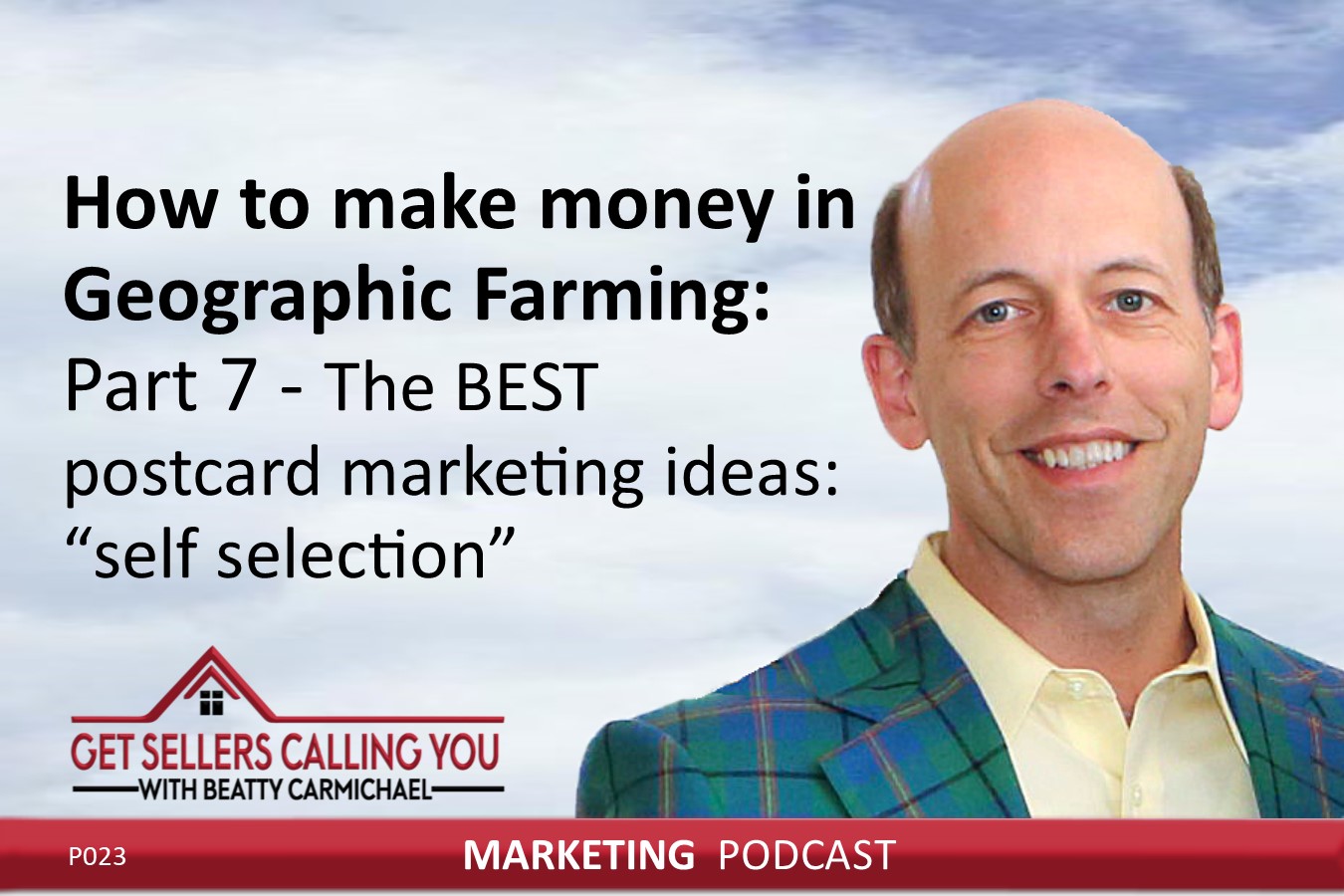
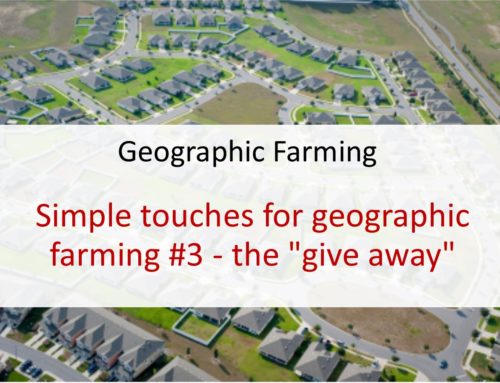
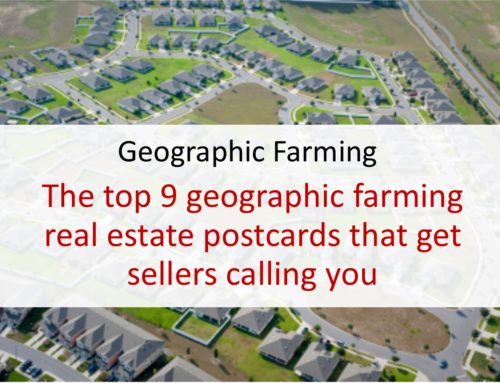
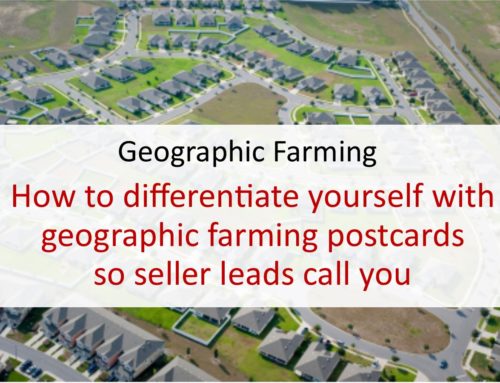

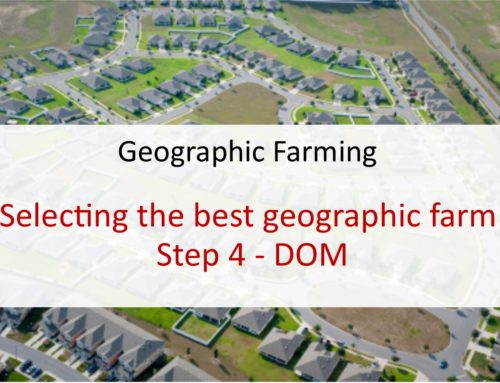

Leave A Comment